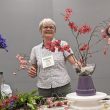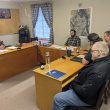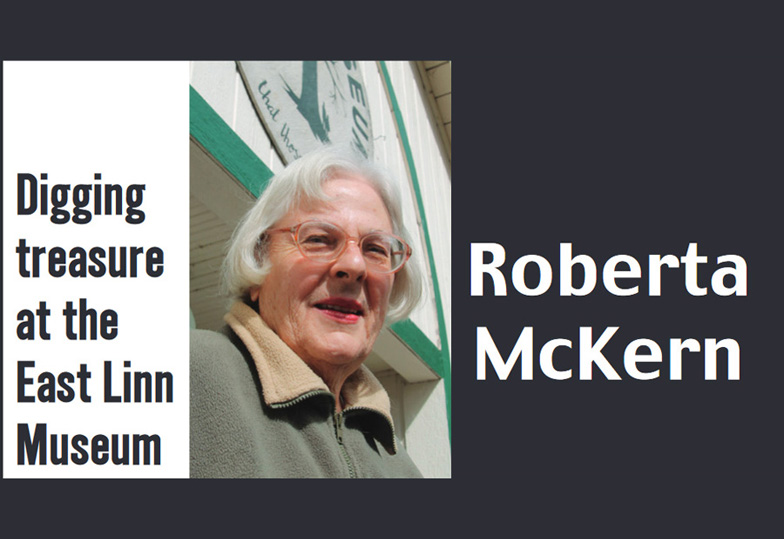EDITOR’S NOTE: The first installment of this two-part series ran in the March 29, 2023, edition of the New Era. Read it online at LebanonLocalNews.com/digging-treasures-at-the-east-linn-museum-anatomy-of-a-massacre-part-1/.
Last month’s article left us at the beginning of author Clifford Drury’s description of the 1847 Whitman massacre, as outlined in his 1937 book, “Marcus Whitman M.D .: Pioneer and Martyr.” What he reconstructed from various narratives illustrates what happened at the Whitman mission, but we won’t repeat it all.
In part of the mission yard on Nov. 19, 1847, a steer was shot and butchered. Meanwhile, an Native American asked Dr. Whitman, who was in his house, to bring out medicine. When he did, a pipe tomahawk struck him in the head. He tried to dodge the blows, receiving cuts to his face and the back of his head. He was also shot.

Whitman’s wife, Narcissa, and other women managed to bring him back inside as Native American men attacked others with tomahawks and guns concealed in blankets. One man defended himself with an axe, wounding a chief in the foot. However, he proved no match for his assailants, who hacked him down.
Narcissa looked out of a window during the melee and was shot, the bullet entering under her left arm. She and other women and children took refuge upstairs in the “mansion.” When Native Americans started up the stairs, they met the barrel of an old rifle held by one of the wounded men at Narcissa’s instruction. It deterred them only temporarily. (When Father Jean Baptiste Brouillet, a Catholic priest, came upon the scene the following day, he counted 10 men dead in the yard. Some of the bodies had been mutilated, due, perhaps, to the use of tomahawks.)
Some white men managed to escape. Millwright Josiah Osborn and his family, all then struggling with the measles (daughter Sylvia died a week before the attack), hid beneath the unfinished floor of the Native American school room, which had been assigned to them as a residence. From safety, they listened as the Native Americans entered and rummaged through their possessions.
Osborn’s wife, Margret, was recuperating and still weak when the family left the mission at night, bound for Fort Walla Walla about 20 miles away. She could not travel the full distance, so Josiah took the two boys and left the girl with her mother.

The fort was on a Hudson’s Bay Company post, where the in-charge William McBean was reluctant to take in massacre escapees, although he relented with the Osborns. He had only five men with him. He’d already learned from another escapee, carpenter Peter Hall, who, allegedly disgusted by McBean’s cold reception, had started down the Columbia, only to drown at the falls. (Others believe he was captured and killed.)
McBean did two things: He sent an interpreter to the Whitman mission to warn the perpetrators not to harm the women and children for fear of reprisals. He also sent a messenger to Fort Vancouver with news of the massacre. Unfortunately, the messenger was not to spread word of it along the way because McBean feared an uprising. But one of the men at Whitman’s sawmill blundered into hostiles on his way to the mission the following day and was killed. He was buried by former Hudson’s Bay Company employee Joe Stanfield.
The women and children upstairs at the “mansion” spent a horrifying night listening to heavy breathing, groans and prayers from men left mortally wounded in lower rooms. Some of the sick suffered severely for want of water. A wounded young man, hired as a schoolteacher, attempted to creep out wrapped up like an Native American. He was discovered and shot.
The following day, Chief Tamsucky lured those upstairs down. They would be cared for, it seemed. Otherwise, the building would be set on fire. It was adobe, which wouldn’t burn. The wooden parts and furnishings, however, were another story.
Narcissa Whitman was helped downstairs and placed on a settee. Her husband lay on another settee in the dining room, staring open-eyed and unaware. He had died during the night.
Joe Lewis carried one end of Mrs. Whitman’s settee but dropped it as they started outside. She fell into the mud, where the Cayuse shot her.
The Native Americans feasted on the beef and stores Marcus Whitman had gathered for the winter while Stanfield set about washing the bodies of the dead and digging a shallow grave, assisted by Father Brouillet.
The captive women and children awaited ransom. Drury glided past the temporary marriages of some of the girls to Cayuse men. One, Lorinda Bewley, was chosen by Chief Five Crows to be his wife. She appealed to priests on hand, but they told her that she’d better go, under the circumstances. Eliza Spalding – the 10-year-old daughter of Henry Harmon Spalding, who’d traveled with the Whitmans and founded a mission at Lapwai, near present-day Lewiston, Idaho – acted as an interpreter for the ransom exchange.
No attempt was officially made to punish the Cayuse until the captives were freed. But then the Cayuse War (1847-1855) ensued. The United States by then owned the Old Oregon Territory – which included Washington, western Wyoming and Montana – and troops were called in to harry the Cayuse who took refuge in the mountains.

Finally, they gave up five men, who were tried for the massacre and hanged, although one may have been innocent. The hanging marshal was Joe Meek, who’d recently been appointed as a United States marshal for the territory. He had carried the news to Washington, D C.
Spaulding had been a witness against the Cayuse. He offered to pray with the Native Americans being held on trial, but the five men preferred the Catholic priest.
The fate of the mission at Waiilatpu and of both Whitmans went into schoolbooks while the details of what took place there have gradually been forgotten. Sometimes we need to remember the complications of the past so we do not, in our own way, repeat them.
As Clifford M. Drury and his two books written in the 1930s remind us, the devil can lurk in the details. Pandemics and conspiracy theories can still abound. Back in the 1830s and ’40s, when “white men’s” diseases decimated Native American tribes in Oregon Territory, early missionaries like Jason Lee in the Willamette Valley and the Whitmans and Spaldings feared that the Native Americans were a dying race.
The measles and dysentery nearly did-in the Cayuse, and their privations in the mountains likely didn’t help them either. There were likely those among them not involved in the massacre.
All did not go well for the hostages, either. Of the seven Sager orphans, the two older boys, John and Francis, both teenagers, were shot by the Native Americans.

A sister, Louisa, died of the sickness, along with the daughters of Jim Bridger and Joe Meek. The remaining four Sager sisters became wards of various Willamette Valley residents. Whitman had arranged to become their legal guardian, and their reminiscences of the massacre became part of Drury’s research.
We know Eliza Spalding came along with Henry Spalding and his family to live near Brownsville for a while, and that Josiah Osborn and his family settled at Union Point south of Brownsville.
Do we trust what Drury said of the massacre? He was very thorough in his research, as well as a Presbyterian minister. We don’t expect to doubt his honesty.






